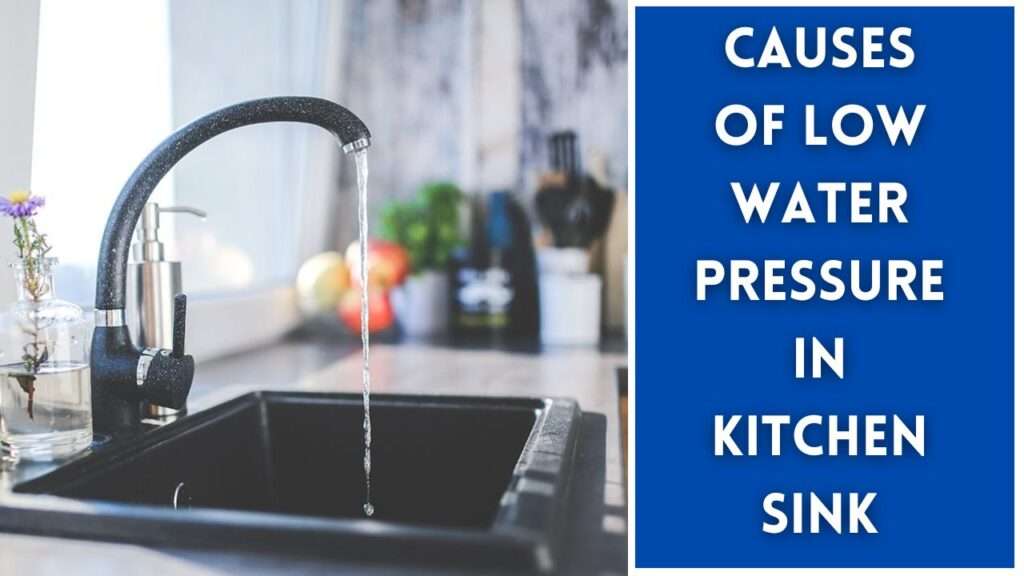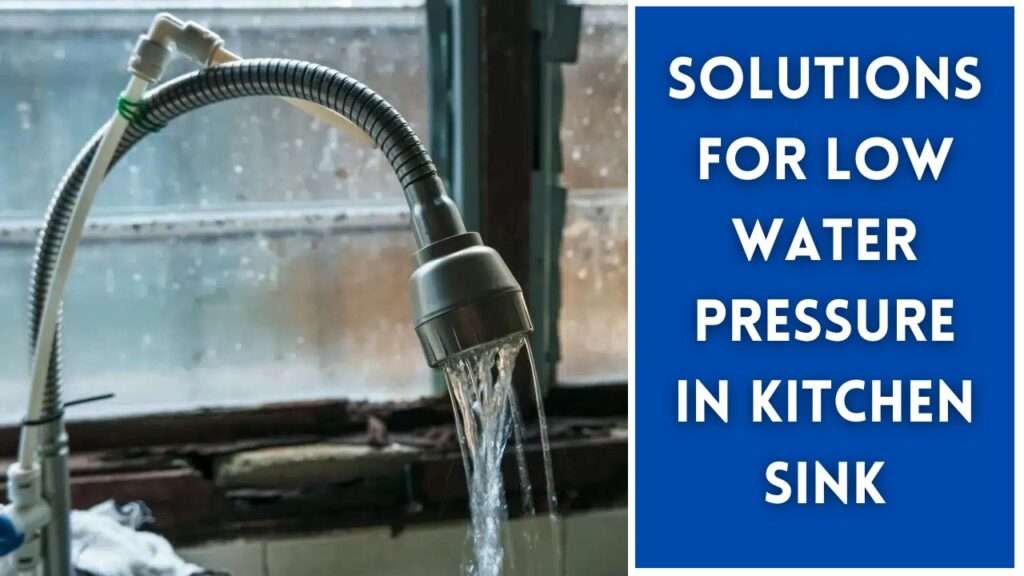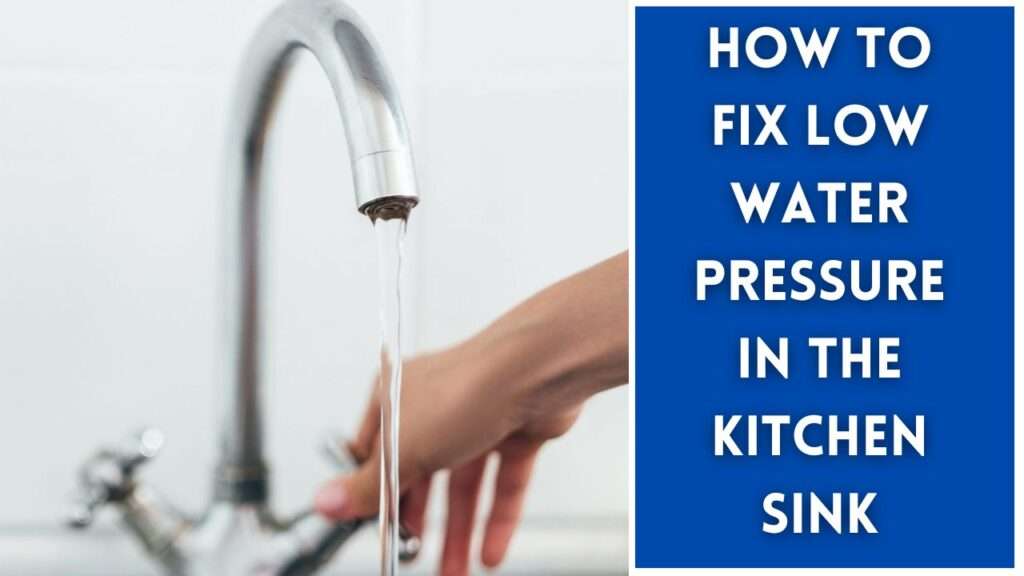Have you ever experienced the frustration of low water pressure in your kitchen sink? It can be incredibly annoying when you’re trying to wash dishes or fill a pot with water, and the water barely trickles out.
Fortunately, there are several easy solutions that can help you improve the water pressure in your kitchen sink. In this article, we will explore some of the common causes of low water pressure and provide practical tips to address the issue effectively.
Having good water pressure in your kitchen sink is crucial for everyday tasks like washing dishes, rinsing vegetables, or filling pots. When the water pressure is low, it can significantly slow your efficiency and make these tasks more time-consuming.
Luckily, there are simple troubleshooting steps you can take to resolve this common issue.
Understanding the Causes of Low Water Pressure
Before delving into the solutions, it’s crucial to identify the potential causes of low water pressure in your kitchen sink. Here are some common culprits:

Clogged Faucet Aerator
The faucet aerator is a small device attached to the end of the faucet spout. Over time, it can accumulate mineral deposits or debris, leading to reduced water flow. A clogged aerator is a frequent cause of low water pressure.
Partially Closed Shut-Off Valves
Shut-off valves control the water flow to specific fixtures in your home, including the kitchen sink. Sometimes these valves may not be fully open, resulting in decreased water pressure. It’s essential to check if the shut-off valves are completely open.
Blocked Water Supply Pipes
Obstructions or mineral deposits in the water supply pipes can restrict the water flow and cause low pressure. Aging pipes or debris accumulation are common factors contributing to blockages.
Low Water Pressure from the Main Supply
In some cases, the low water pressure issue may not be specific to your kitchen sink. It could be a result of low water pressure from the main supply line, affecting multiple fixtures in your home. Contacting your water supplier can help determine if this is the underlying cause.
Easy Solutions for Low Water Pressure in Kitchen Sink
Now that we understand the potential causes, let’s explore some practical solutions to improve the water pressure in your kitchen sink:

Cleaning the Faucet Aerator
Start by removing the aerator from your faucet using pliers or an adjustable wrench. Rinse it thoroughly to remove any debris or mineral buildup. If necessary, use a small brush to scrub away stubborn deposits. Once clean, reattach the aerator to the faucet and check if the water pressure has improved.
Checking Shut-Off Valves
Locate the shut-off valves connected to your kitchen sink. Ensure they are fully open by turning them counterclockwise. Sometimes, valves can become partially closed over time due to sediment buildup or accidental adjustments. By ensuring they are fully open, you can restore optimal water pressure.
Clearing Blocked Water Supply Pipes
If you suspect blockages in your water supply pipes, it’s advisable to seek professional assistance from a plumber. They have the expertise and tools to diagnose and clear any obstructions effectively. Clearing the pipes will restore the water flow to its normal pressure.
Contacting the Water Supplier
If you’ve exhausted all the troubleshooting steps and the low water pressure issue persists, it’s worth reaching out to your water supplier. They can investigate if there are any problems with the main supply line that may be affecting your home. They might also provide guidance or schedule maintenance if necessary.
How To Fix Low Water Pressure in the Kitchen Sink
To fix low water pressure in your kitchen sink, follow these steps:

- Check other faucets: Determine if the low water pressure issue is specific to your kitchen sink or affects the entire house. If it’s only the kitchen sink, move on to the next steps.
- Clean the aerator: Unscrew the aerator from the end of the faucet and clean it thoroughly. Mineral deposits or debris might be clogging the aerator, causing low water pressure. Soaking it in vinegar can help dissolve any buildup.
- Check the supply valves: Ensure that the supply valves under the sink are fully open. Sometimes, they may be partially closed, reducing water flow.
- Inspect the pipes: Examine the water supply pipes for any leaks, kinks, or blockages. Tighten any loose connections, straighten kinks, or clear any obstructions.
- Test the shut-off valve: Locate the shut-off valve for your kitchen sink and make sure it’s fully open. If it’s partially closed, it can restrict water flow.
- Call a professional: If the above steps don’t resolve the issue, there may be a more complex problem within the plumbing system. Contact a licensed plumber to assess and fix the low water pressure.
If you’re unsure or uncomfortable with any step, it’s best to consult a professional plumber for assistance.
Conclusion
Dealing with low water pressure in your kitchen sink can be frustrating, but with the right solutions, you can overcome this issue. By understanding the potential causes and implementing the easy fixes mentioned above, you can bid farewell to low water pressure and enjoy a fully functional kitchen sink once again.
FAQs On Low Water Pressure in Your Kitchen Sink
Q1. Can low water pressure affect other fixtures in my home besides the kitchen sink?
Yes, low water pressure can impact other fixtures such as showers, bathroom sinks, and toilets if the issue stems from the main supply line or a common plumbing problem.
Q2. Is it necessary to hire a professional plumber to address the low water pressure in my kitchen sink?
Not always. The solutions provided in this article are simple enough to attempt on your own. However, if you encounter difficulties or suspect more complex issues, it’s advisable to consult a professional plumber for accurate diagnosis and repair.
Q3. How often should I clean the faucet aerator to maintain good water pressure?
Cleaning the faucet aerator every 3-6 months is generally sufficient to prevent mineral buildup and ensure optimal water flow. However, it can vary depending on the water quality in your area.
Q4. What can I do if the shut-off valves are difficult to access or appear to be stuck?
In such cases, it’s best to seek professional help. A plumber can assist in identifying the cause and provide appropriate solutions for addressing shut-off valve issues.
Q5. Are there any long-term measures to prevent low water pressure in the kitchen sink?
Regular maintenance, including periodic cleaning of faucet aerators and plumbing inspections, can help prevent low water pressure. Additionally, being mindful of what goes down the drain and avoiding clogs can contribute to better water flow in the long run.
Low water pressure in your kitchen sink doesn’t have to be a persistent annoyance. By following the outlined solutions and taking proactive measures, you can say goodbye to low water pressure and enjoy the convenience of a fully functional kitchen sink once again.